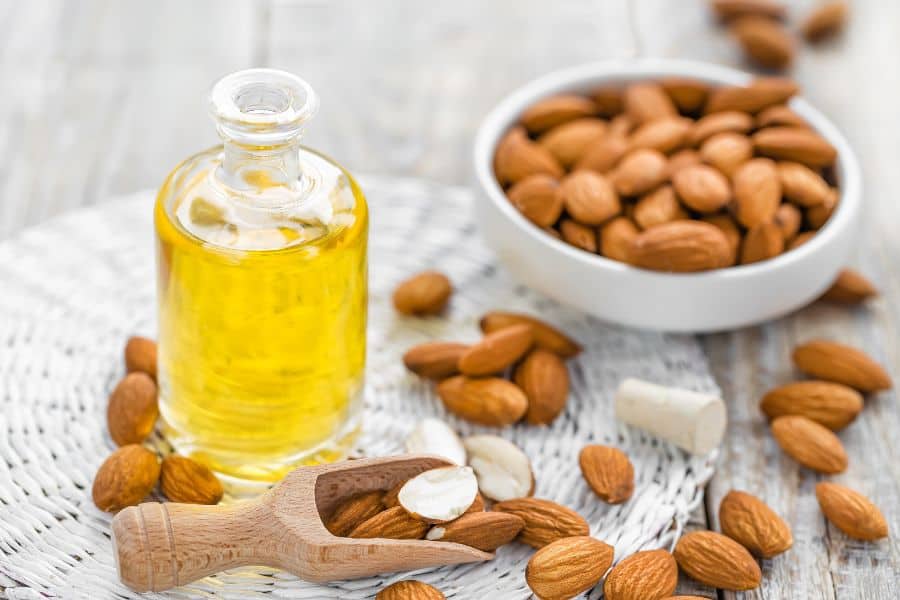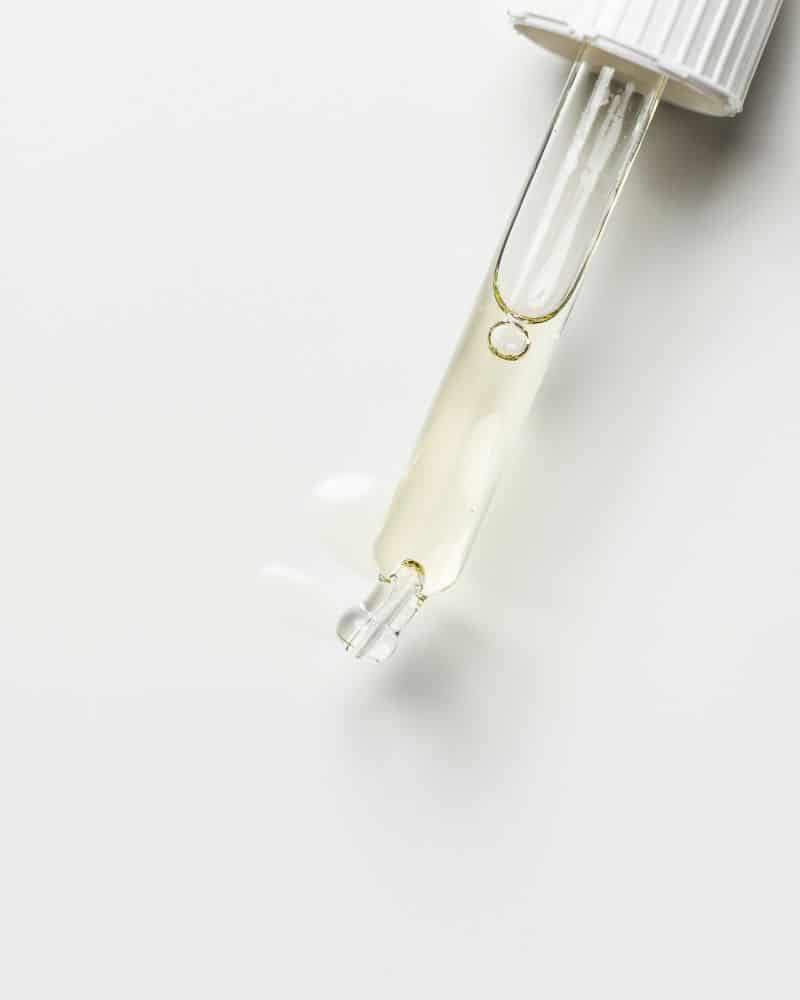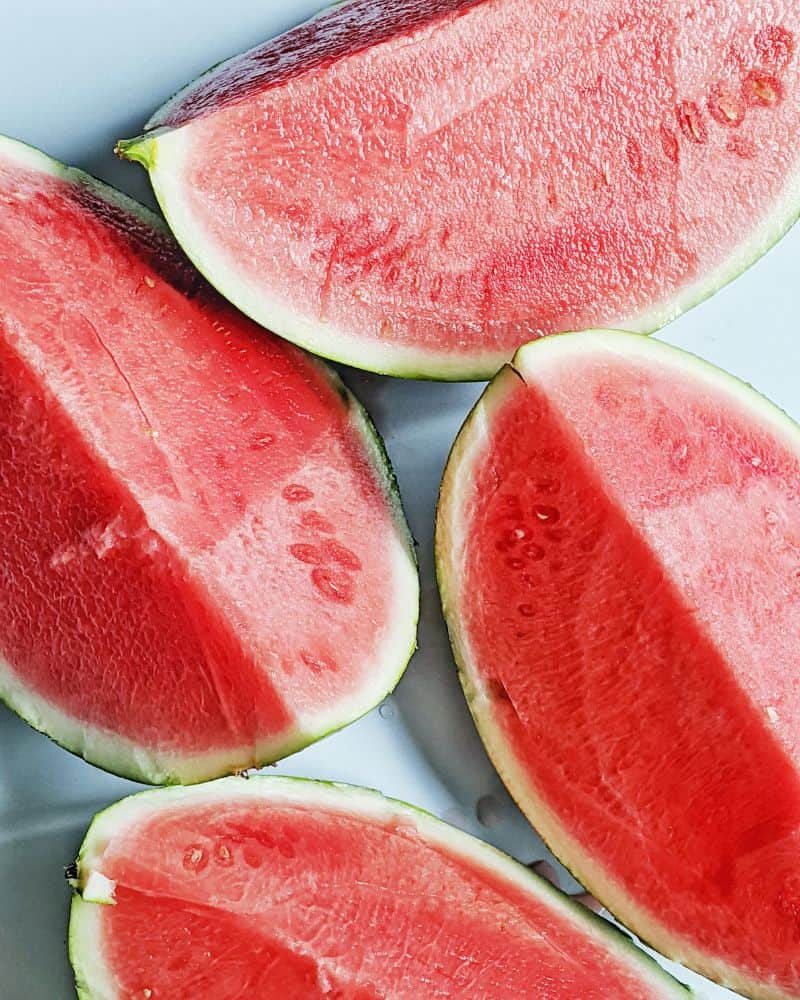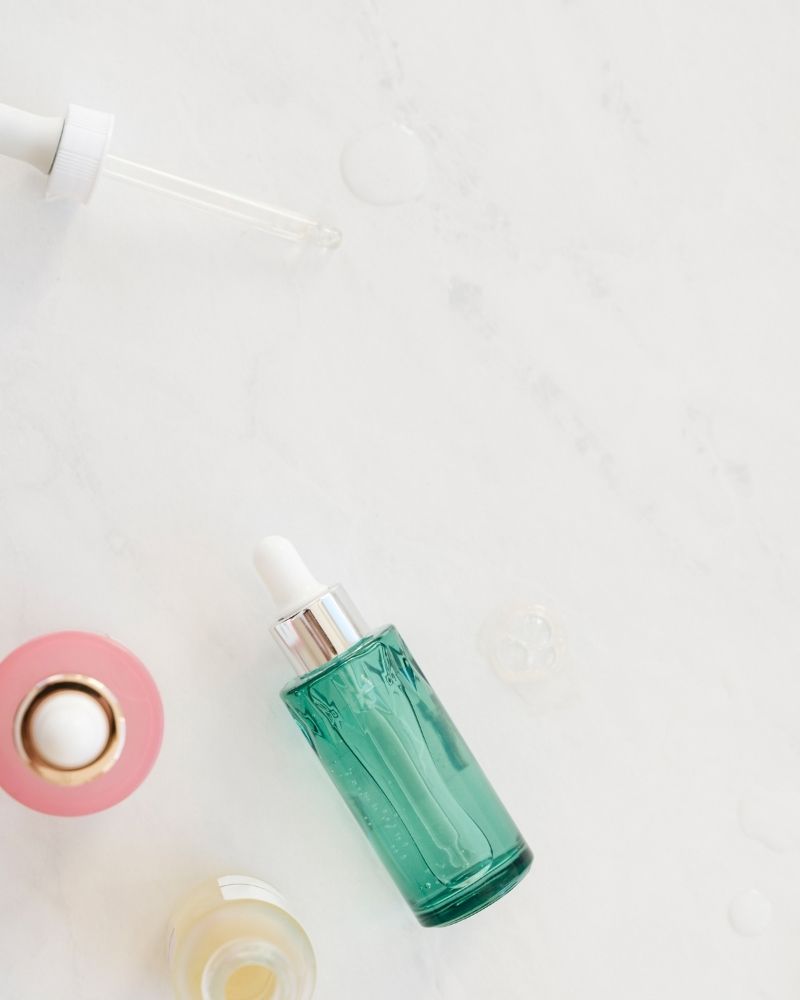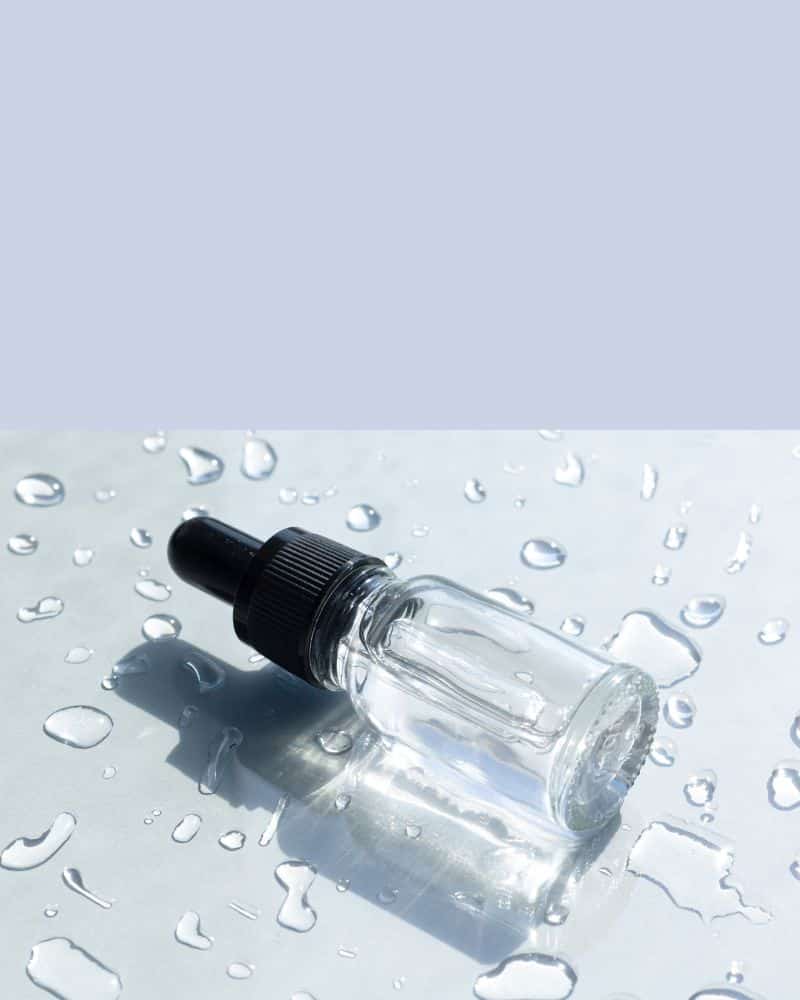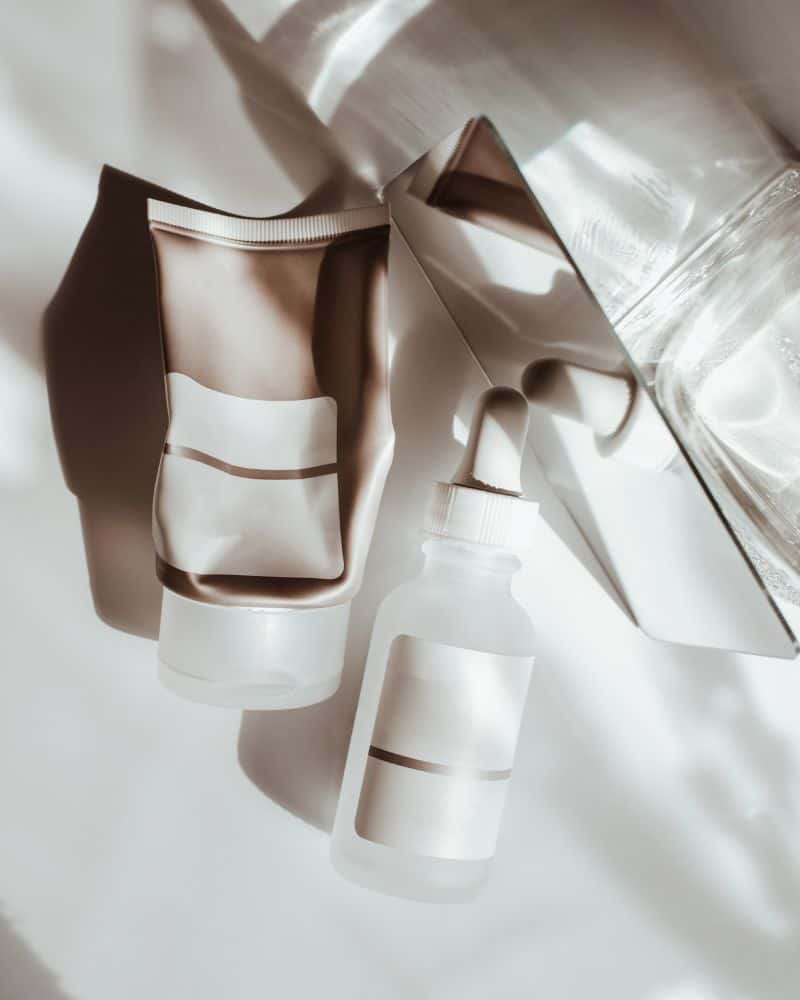Azelaic Acid Vs Salicylic Acid: Which Is Best For Your Skin?
This post may contain affiliate links.

There’s no shortage of skincare acids on the market these days. With so many options, it can be hard to know which one is right for your skin. Two of the most popular acids are azelaic acid and salicylic acid which are both often toted as miracle workers when it comes to treating acne. In this post we’ll compare azelaic acid vs salicylic acid including what they do, benefits and which one is best for your skin.
Choosing the right exfoliating acid for your skin—whether or not you suffer from acne—can be a bit scary. After all, the word acid doesn’t exactly have the friendliest connotation, and there’s always a chance your skin could have an adverse reaction.
Thankfully, doing a bit of deep diving can help you choose an acid that’s best for the makeup of your skin and how you’re looking to improve it—and beginning with how blemishes develop within the skin is key to selecting which will be most effective for you.
Understanding Acne
No matter what your history with acne has been, chances are you’ve experienced at least one pimple or breakout in your lifetime. (And if you haven’t? Well, let’s just say you’ve gotten pretty lucky.) It’s easy to think that a dirty face leads to clogged pores which lead to acne, but for many skin types, it’s a lot more complicated than that.
How Does Acne Develop?
Acne is caused when tiny holes in the skin—known as pores—become blocked. Your pores contain your hair follicles, and from those grow individual hairs. Attached to those are tiny sebaceous glands, which lubricate the hair and help prevent it from drying out by secreting a substance called sebum.
Typically, those with acne produce excess sebum through their sebaceous glands, and this excess mixes with dead skin cells which leads to clogged pores. When this isn’t managed, things can become complicated: Bacteria invade the pores to feed on the sebum and skin cells, causing inflammation and irritation and acne.
For those that suffer from acne, it can be a difficult and debilitating condition—and figuring out a sustainable way to treat it with the products in your beauty cabinet becomes a top priority. Even for those that don’t, taking preventative measures is just as important, as it is a common misconception that acne is confined to hormonal teenage years.
What Can You Do to Treat and Prevent Acne?
Treating and preventing acne looks different for many people, as skin types, textures, and other conditions also have an effect on the development of acne. That said, because the root cause of acne begins with the inability of the pore to release the sebum it produces and the consequent clogging from skin cells, ensuring the pores can breathe and stay clear is critical.
While it can be tempting to exfoliate like crazy to help acne or other difficult skin conditions, don’t be fooled: It can actually make them worse. Your skin needs some level of healthy lubrication to protect itself, and when that is stripped away, it can leave it prone to even more problems down the line. In fact, manual exfoliation can actually spread existing bacteria around, complicating matters further.
Opting for an exfoliating acid in a skin-safe concentration can help break down what’s stuck inside your pores without causing any tears on the skin—something that often happens from scrubbing or using cleansers with harsh, jagged particles. Making sure you select an acid that aligns with what your skin is experiencing can have a major impact on its effectiveness.
Of the safe and effective acids out there, salicylic acid has always remained at the top of the list and can be found in hundreds of skin care products on the market. However, a new contender is at play and has just as many benefits—if not more—than what you’d typically find at the pharmacy or on the shelves: azelaic acid.
So, how do these two compare? And, at the end of the day, which is best for your skin? Let’s break it down and find out.
What Is Azelaic Acid
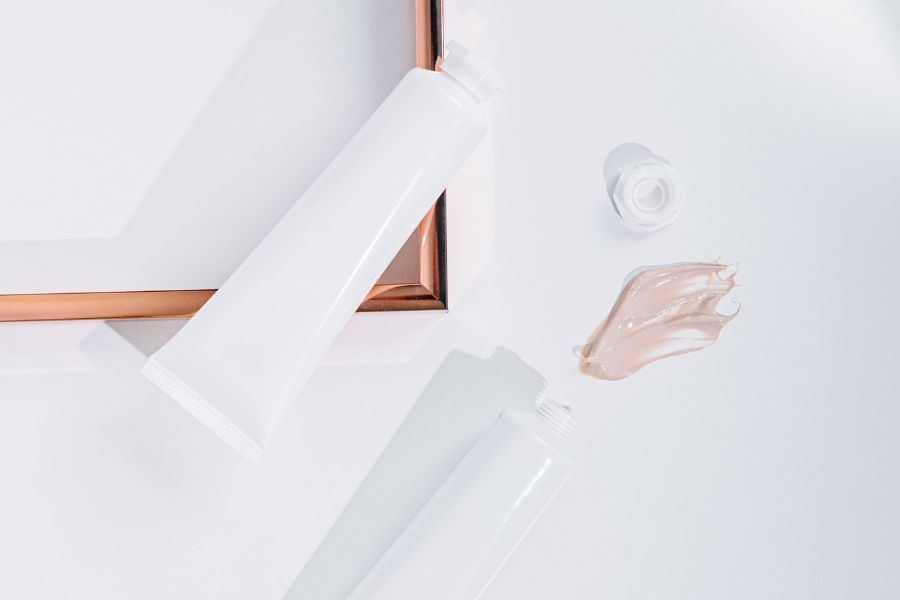
Azelaic acid is a dicarboxylic acid that occurs naturally in grains like wheat, rye, and barley. Although it’s naturally occuring, synthetic Azelaic Acid is usually used in skincare products. Azelaic acid has been shown to be an effective acne treatment because of its ability to kill acne-causing bacteria while also reducing inflammation, which is why it’s FDA approved to treat acne and rosacea.
Azelaic acid can be found in over-the-counter (OTC) products in concentrations of 10% or less or in prescription-only products in higher concentrations.
Azelaic acid is a keratolytic, an antibacterial, antioxidant, and anti-inflammatory that helps to break down dead skin cells and improve skin texture. And even though Azelaic Acid is a powerhouse ingredient, it’s actually very gentle on the skin and is one of the best exfoliants for those with sensitive skin because it’s much more gentle than other ingredients like retinoids or BHA’s.
Did you know that azelaic acid is actually produced by the healthy bacteria that live on your skin known as Malassezia furfur? In order for this to affect your skin in a positive way, you must have enough healthy bacteria on your skin already, though—and that’s usually not the case with troubled skin.
While it might not be the first ingredient to come to mind (or maybe even at all), azelaic acid is a favorite of dermatologists for both its gentleness and versatility. It helps with a ton more than just acne breakouts: It may help banish other forms of bacteria and reduce redness brought on by different skin conditions such as rosacea or hyperpigmentation.
Related post: The Ordinary Azelaic Acid Review
Benefits of Using Azelaic Acid on Your Skin
The benefits of using azelaic acid on your skin seem to be endless, which explains its recent rise in popularity. Here are just a few of this wonder-worker’s benefits:
- Anti-Bacterial – Azelaic acid has anti-inflammatory and antibacterial properties that make it ideal for acne-prone skin. It kills acne cause bacteria which treats active acne and helps prevent new acne from forming
- Anti-Inflammatory – Azelaic acid is anti-inflammatory so can reduce redness, swelling, and inflammation. This makes it perfect for individuals with sensitive skin or ailments like rosacea or eczema, but it can also help reduce inflammation associated with acne
- Smooths Texture – Azelaic acid aids in the breakdown of the attachments that hold dead skin cells together, resulting in smoother, brighter, and softer skin.
- Keratolytic – Azelaic acid’s keratolytic properties help to break down dead skin that that can lead to clogged pores and acne which can help with closed comedones and other textural issues
- Treats Roseacea – Rosacea is a common skin condition that can cause redness, inflammation, and pimple like lesions. Azelaic acid is one of the most efficient rosacea treatments since it helps to reduce redness, swelling, and bumps associated
- Fades Hyperpigmentation – Azelaic acid is also great for fading dark spots and hyperpigmentation, including acne scarring by inhibiting the creation of an enzyme called tyrosinase, which is important in melanin synthesis (which is what creates pigment)
- Treats & Prevents Acne – Azelaic acid is also useful for treating and preventing acne. It helps to kill bacteria, unclog pores and reduce inflammation which are all key in treating acne
Related post: Does Azelaic Acid Cause Purging?
Who Should Use Azelaic Acid?
Because this is a safer, gentler acid than others on the market, it can be used by almost everyone. Many acids on the market suggest that they shouldn’t be used by pregnant or breastfeeding women, as they can seep into the pores and potentially cause harmful effects—but that’s not the case with azelaic acid.
In fact, its versatility along with the results it produces is exactly why it is skyrocketing to the top of the beauty sphere. Not only does it work hard to treat and prevent acne, it has less intense side effects than most other acids on the market when it comes to skin care.
What Is Salicylic Acid

As one of the most recognizable skin care ingredients on the market, salicylic acid has long been revered for its benefits to skin and its ability to treat and prevent acne. Its presence in hundreds of over-the-counter and prescription products have cemented it as a permanent fixture in the treatment of acne and other related skin conditions.
Salicylic acid, also known as Beta Hydroxy Acid (BHA), is a chemical exfoliant that comes from the Willow Bark plant. It’s an oil-soluble exfoliant, which means it can cut through all the oil on your skin and travel deep into the pores to unclog and prevent acne.
This is one of the reasons why it’s the best ingredient for those with oily skin and acne. It can help help to treat clogged pores, blackheads and sebaceous filaments.
Dead skin cells have a habit of wanting to stick around on the skin and they sort of stick together so you need a good exfoliant to keep your pores from getting clogged with dead skin cells. And that’s where salicylic acid comes in.
Salicylic acid works by ‘ungluing’ dead skin cells from each other so they can be easily exfoliated away.
Salicylic acid can help to dissolve dead skin cells and unclog pores, decrease blackheads, regulate oil production, and shrink pores. BHA’s are capable of going deep into the pore and cleaning it out, making them superior for treating acne than glycolic or other AHA’s.
That said, there are advisories with this acid, and using too much of it or too often can lead to even more problems down the line. When your skin is stripped of its natural oils and barrier, it leaves it more susceptible to free radical damage and other bacteria growth down the line—so it’s absolutely crucial that if you go for a salicylic acid treatment, you use it in the right dilutions and don’t overdo it.
Related post: Can You Mix Salicylic Acid With Niacinamide?
Benefits Of Salicylic Acid
- Treats active acne – salicylic acid has anti-inflammatory properties which helps to decrease inflammation associated with pimples and can help to heal them quicker
- Prevents acne – BHA can treat active acne, but it also prevents new acne from forming by killing acne causing bacteria, balancing oil production and unclogging pores. It’s a comedolytic agent which means it prevents comedolytic acne like blackheads or closed comedones
- Smooths skin – salicylic acid is a keratolytic agent which means it can break down the outer layer of dead skin. This can help with stubborn closed comedones and smooth out rough skin texture
- Decreases oil production – salicylic acid is known for its ability to help balance and regulate oil production. It does so by regulating sebocytes, which are the cells that produce the sebum on your skin
- Minimizes pores – salicylic acid helps to keep pores clear and when pores are clear, they appear smaller
Related post: Does Skin Purge With Salicylic Acid
How Salicylic Acid Works on the Skin
Salicylic acid belongs to a class of drugs known as salicylates; when applied to the skin, it works by helping the skin shed dead cells from the top layer, therefore decreasing redness and swelling. This often leads to less breakouts as the pores are kept more clear, and the regular unsticking of dead skin cells that build up over time can actually speed up healing.
Which Skin Types Benefit From Salicylic Acid?
While salicylic acid can be beneficial for all skin types depending on the concentration and specific usage—a face wash compared to a leave-on serum, for example—it is generally most beneficial for those with acne-prone or oily skin types that need extra help getting oil production under control.
It’s important to remember that not all breakouts are created equal, and sometimes extra dry skin types suffer from them just as badly because the skin is trying to compensate for a lack of lubrication. Extra oil gets trapped beneath layers of dead skin, causing acne to begin underneath and dry, flaky skin to remain on top. In these cases, salicylic acid can sometimes dry the skin out further, potentially worsening acne.
Azelaic Acid vs. Salicylic Acid: How Do They Compare?
Now that you’ve got a basic rundown of these two acids, let’s take a look at how they compare when they go head-to-head in terms of effectiveness, availability, and overall benefits.
Azelaic Acid Vs Salicylic Acid Differences
Sure, azelaic acid and salicylic acid both are helpful in the treatment of acne, and both have similar properties when it comes to breaking down bacteria and skin cells that bring your skin down—but the way they each go about it is very different.
Azelaic acid is derived from grains, and it works by inhibiting the growth of acne-causing bacteria while also keeping your pores clear. Salicylic acid, on the other hand, is a type of beta hydroxy acid (BHA) that’s derived from willow bark extract, and it works by dissolving sebum and unclogging pores.
Whereas salicylic acid naturally targets the sebum and dead skin cells as the culprit behind acne, azelaic acid targets the bacteria within the pores that combine with both to further exacerbate acne. This may seem like a six-of-one, half-dozen-of-the-other kind of comparison, but it makes a big difference when it comes to treating the symptoms of skin conditions versus treating the root cause.
Azelaic Acid Vs Salicylic Acid Similarities
Although the approach these acids take in working toward beating acne and other unfavorable skin issues are very different, they both:
● contain keratolytics, chemical agents that dissolve flakes and scales to help combat skin conditions that involve the buildup of dead cells
● have antibacterial properties that help prevent bad bacteria from thriving
● are anti-inflammatory, and can help reduce both redness and swelling that coincide with breakouts
Related post: Alpha Arbutin Or Vitamin C: Which Is Better?
What’s The Difference Between Salicylic Acid And Azelaic Acid?

When it comes to skincare, there are a lot of different acids out there. Two of the most popular acids are salicylic acid and azelaic acid. So, what’s the difference between them?
Salicylic acid is a type of beta hydroxy acid. This means that it’s oil-soluble, which makes it ideal for treating oily and acne-prone skin. Azelaic acid, on the other hand, is a dicarboxylic acid. This means that it’s water-soluble, making it better for dry or sensitive skin.
Both salicylic acid and azelaic acid have anti-inflammatory and antimicrobial properties, so they’re good for treating acne. Salicylic acid and azelaic acid are also a keratolytic, which means that they helps to break down dead skin cells. Azelaic acid can also help to lighten dark spots and even out skin tone.
So, which one should you use? It really depends on your skin type. If you have oily or acne-prone skin, salicylic acid is a good choice. If you have dry or sensitive skin, azelaic acid is a better option. You can also use both acids together safely.
Related Post: Salicylic Acid Vs Lactic Acid
Azelaic Acid Vs Salicylic Acid For Acne
Both azelaic acid and salicylic acid are commonly used to treat all forms of acne from closed comedones to cystic acne. But is one better than the other?
Both azelaic acid and salicylic acid are effective at treating acne – they are anti-bacterial, anti-inflammatory and keratolytics. They’re both safe, effective ingredients that can help to get your acne under control and keep skin clear.
Generally, Azelaic acid is better for those with sensitive or dry skin types and salicylic acid is better for those with combination or oily skin. Salicylic acid can be strong and irritating, which is why it’s not usually recommended for those with sensitive or reactive skin types.
Related post: Azelaic Acid Vs Benzoyl Peroxide For Acne
Azelaic Acid Vs Salicylic Acid For Blackheads
A blackhead is a type of acne lesion that forms when a pore becomes clogged with sebum, dead skin cells, and bacteria. The sebum and dead skin cells oxidize, turning black as they come into contact with the air. Blackheads are often called open comedones because the top of the pore is open to the air.
So is salicylic acid or azelaic acid better for blackheads?
Saliyclic acid is better for blackheads because it’s oil soluble. This means that it can penetrate the pore and help to break down the sebum and dead skin cells that are clogging it. Azelaic acid can also help to treat blackheads, but it’s not as effective as salicylic acid.
Related post: Azelaic Acid Vs Niacinamide
Azelaic Acid Vs Salicylic Acid For Acne Scars & Hyperpigmentation
Azelaic acid is the best choice for acne scars and hyperpigmentation. Azelaic acid can help to fade acne scars and hyperpigmentation by inhibiting melanin production and speeding up skin cell turnover.
Melanin is the pigment that gives skin its color, so by inhibiting melanin production, azelaic acid can help to lighten dark spots and scars.
Salicylic acid does not have any effect on melanin production, so it’s not as effective for fading scars and hyperpigmentation.
Azelaic Acid Vs Salicylic Acid For Rosacea
Azelaic acid is the best choice for rosacea, in fact it’s FDA approved to treat rosacea. Azelaic acid helps to reduce inflammation and redness, two of the main symptoms of rosacea. It’s gentle enough to be used on inflammed skin to help reduce redness, swelling, inflammation and pimple like lesions associated with rosacea.
Salicylic acid can help to reduce inflammation, but it’s also irritating, so it’s not the best choice for those with rosacea.
Can I Use Azelaic Acid With Salicylic Acid?
So now that we know all about these two anti-acne Ingredients, can you mix azelaic acid with salicylic acid? Yes you can! These two ingredients paired together can help to treat and prevent acne while smoothing skin texture and fading hyperpigmentation.
Azelaic acid and salicylic acid together make a great team. Azelaic acid helps kill acne causing bacteria and reduce redness and inflammation while salicylic acid helps to unclog pores and regulate sebum production. So if you use salicylic acid and azelaic acid together, you can target all the different causes of acne.
Related post: Can You Use Azelaic Acid With Vitamin C?
Azelaic Acid Vs Salicylic Acid Wrap Up
When it comes down to the azelaic acid vs salicylic acid debate, the choice certainly isn’t easy as both of these ingredients have a lot to offer. In general, azelaic acid is better for those with sensitive or dry skin types while salicylic acid is better for those with combination or oily skin. Azelaic acid can help to fade acne scars and hyperpigmentation while salicylic acid helps to unclog pores and regulate sebum production. Azelaic acid and salicylic acid are both great ingredients for treating acne and if you can’t decide between salicylic acid vs azelaic acid, they can safely be used together.
